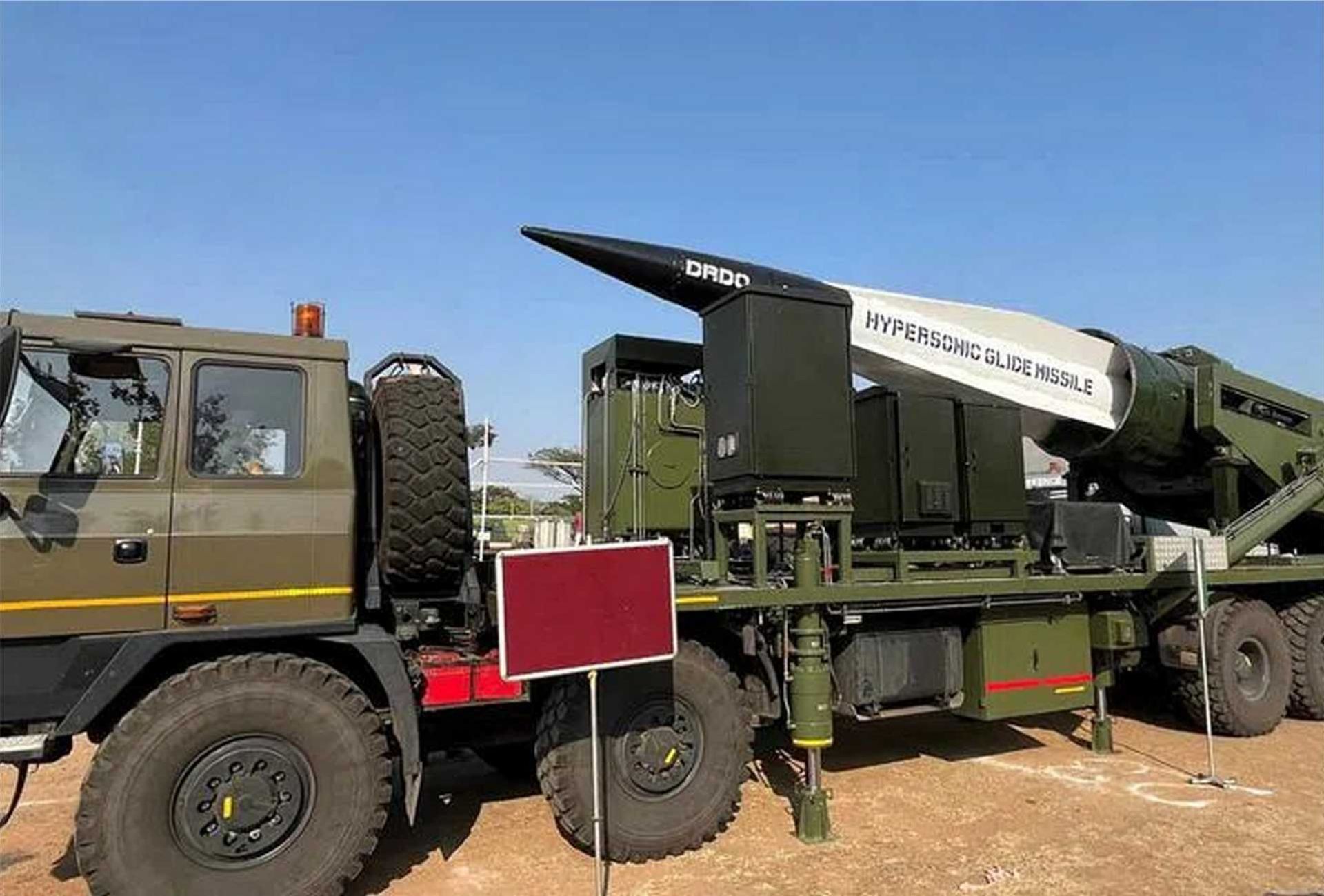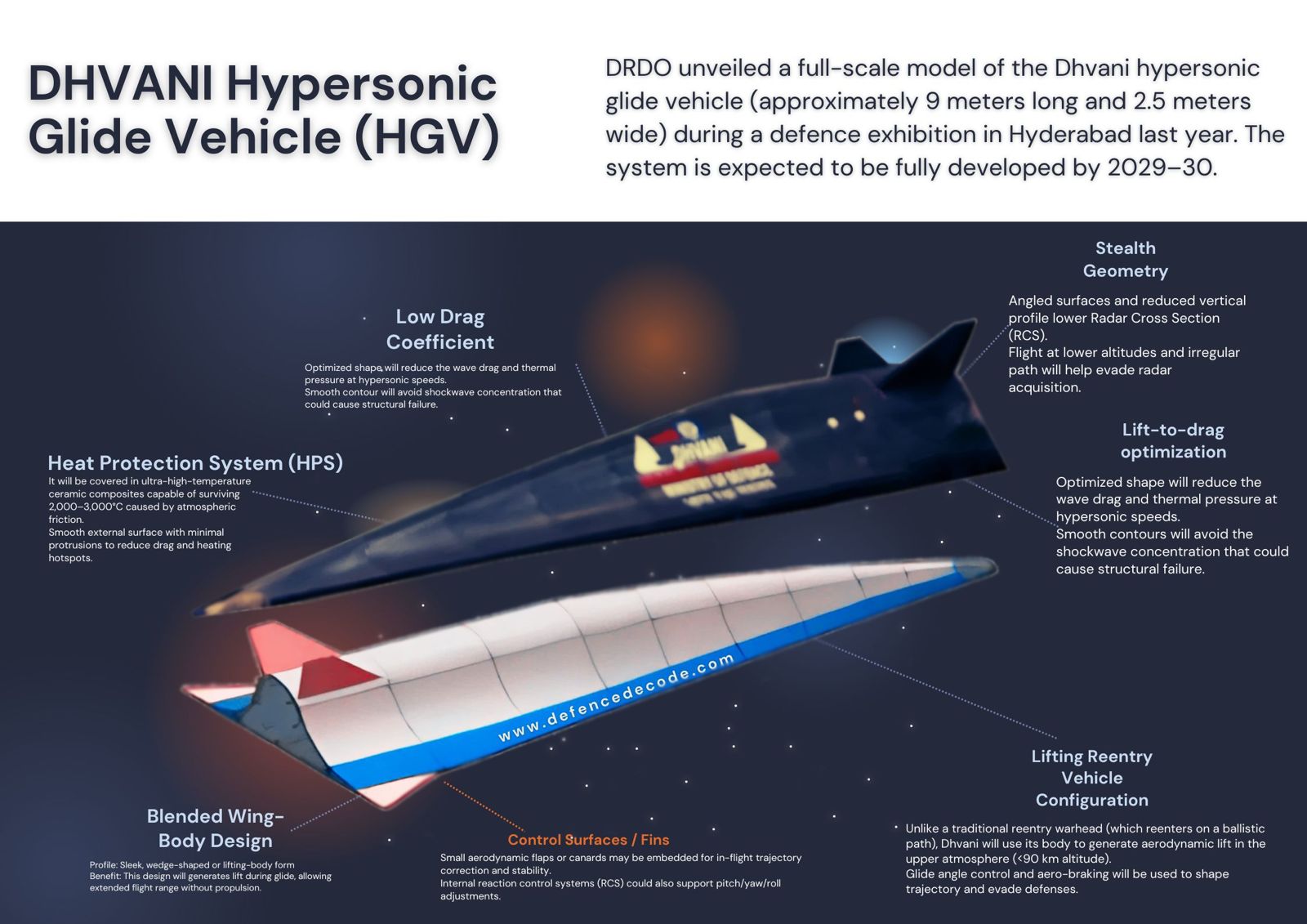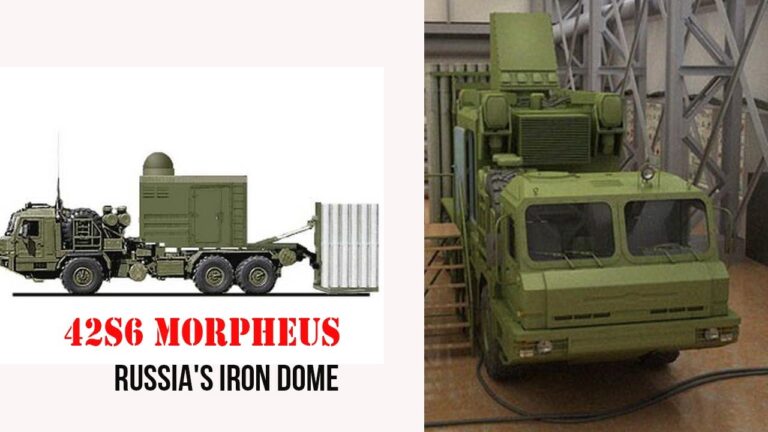
India’s Dhvani Hypersonic HGV — Mach 6 Ambition
What is the Dhvani hypersonic missile?
Indian media describe Dhvani as a next-generation Hypersonic Glide Vehicle (HGV) programme designed to cruise at roughly Mach 6. Reports claim the system will pair a solid-fuel booster with a manoeuvrable glide body to execute wide-angle turns at high altitude. Because of that, Dhvani’s hypersonic missile coverage makes it a harder target for legacy air defences. While these claims are notable, official DRDO confirmation remains limited; therefore, treat specifications as reported rather than verified.
The HSTDV foundation
India’s Hypersonic Technology Demonstrator Vehicle (HSTDV) validated key building blocks such as scramjet ignition, sustained combustion, and thermal-structural materials. That programme demonstrated powered hypersonic flight and underpins India’s hypersonic ambitions. If the Dhvani hypersonic missile exists as described, HSTDV is its logical foundation.
BrahMos vs Dhvani: Speed, Altitude, and Agility
BrahMos is a ramjet-powered supersonic cruise missile known for sea-skimming profiles and high terminal speed. By contrast, an HGV like the Dhvani hypersonic missile would trade constant sea skimming for altitude, speed, and cross-range manoeuvrability. That shift, if achieved, complicates prediction and interception but raises thermal and guidance challenges.

Comparing Dhvani to China’s DF-26
China’s DF-26 is an intermediate-range ballistic missile (IRBM) with a land attack and an anti-ship variant that typically flies a ballistic trajectory with potential terminal manoeuvres. An operational HGV such as the Dhvani hypersonic missile (as reported) would be a different class: a boosted glide body designed to vary its path over long distances. This comparison is frequently seen in media, but it combines different categories, so please consider it with care.
Can THAAD or Iron Dome stop it?
Aircraft and missile defence systems are evolving to counter hypersonic threats. While THAAD upgrades and future architectures strive to enhance tracking and end-game interception, they are still in the early stages of development. The Iron Dome is optimised for short-range missiles, not hypersonic glide vehicles. So treat claims that Dhvani would be “unstoppable” with caution—real performance hinges on engagement geometry, timely cueing, and future interceptor upgrades.

Reported status and timelines
Indian outlets suggest testing could occur by late 2025, citing speeds near 7,400 km/h (~Mach 6). Some education and news portals repeat these details. However, without an official DRDO programme brief, the Dhvani hypersonic missile is a media-reported effort rather than a fully documented system. Track official releases for confirmation of scope, variant count, and test objectives.
Strategic impact for India
If realised, an agile HGV would complement BrahMos by adding faster time-to-target, wider cross-range, and off-axis attack options. That mix strengthens conventional deterrence and complicates adversary planning. Even so, sustaining Dhvani hypersonic missile performance demands breakthroughs in thermal protection, guidance under plasma effects, secure datalinks, and cost-effective production—challenges every HGV power faces.
References
- DRDO/PIB on HSTDV success — https://www.pib.gov.in/Pressreleaseshare.aspx?PRID=1651956 Press Information Bureau
- CSIS Missile Threat—DF-26 profile—https://missilethreat.csis.org/missile/dong-feng-26-df-26/ Missile Threat
- BrahMos sea-skimming press note — https://www.brahmos.com/press-release/128 Brahmos
- Zee News explainer on “Dhvani” — Zee News — Dhvani HGV article






